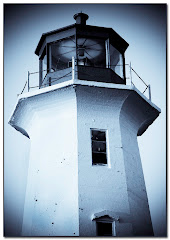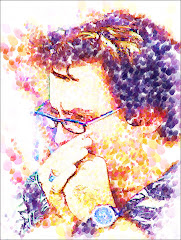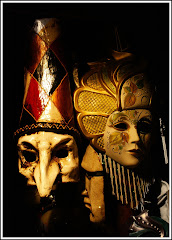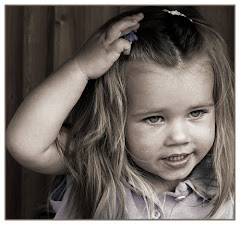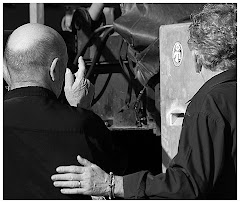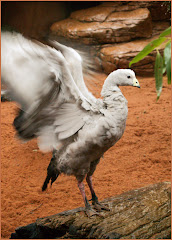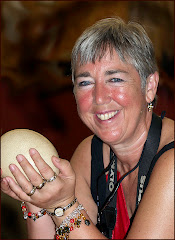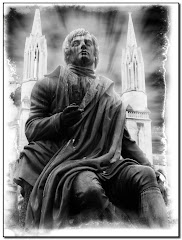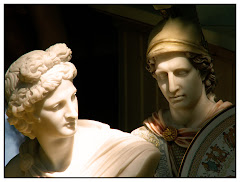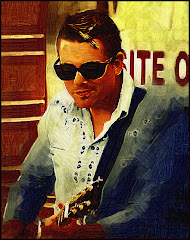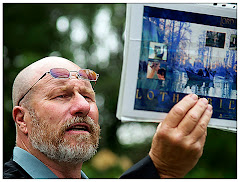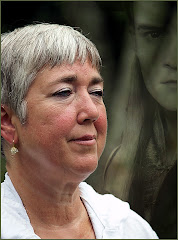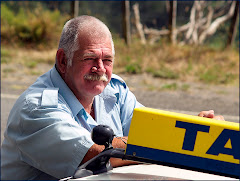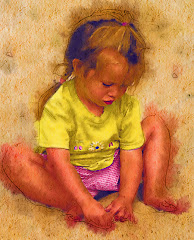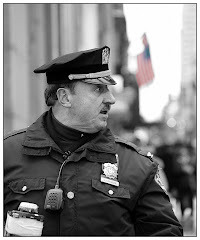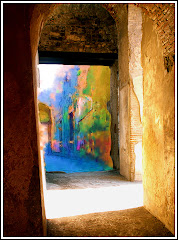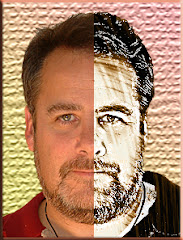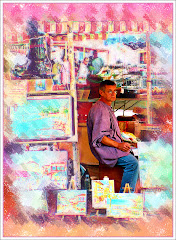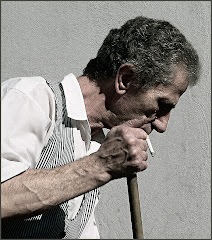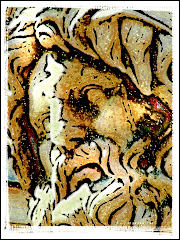
Deep sea fishing in Texas! Could there be a better way to cap a week in Brownsville?
As I stood on the dock, smelling the sea air, I found myself thinking about Hemmingway and all those other mega-man types. Yup. We were going out in a boat to outsmart some fish.
The sailor guy, the one in the picture, appeared and began speaking with a very serious tone: "We are looking at six foot to eight foot waves out there. The captain wanted me to tell you all very clearly," (here he paused for effect and waited until the gathered tourists stopped their jolly chatting and gave him their complete attention.) "If anyone wants to go another day, that's okay."
All of us, particularly the men, looked at one another, seeing who would be the first to say "uncle." I had sea bands on. I had taken a Dramamine. I examined my fellow passengers, a slight sneer on my spirit, wondering who would be the first to puke.
"It doesn't matter how much Dramamine you've taken," said the sailor guy. Was he reading my mind? "Some of you ARE going to get sick. If you are going to puke don't puke in the bathroom. Don't puke in the cabin. Puke on the deck or over the rail. The fish don't mind the extra food."
A titter of slightly nervous laughter.
The sailor guy looked us over and asked one last time very seriously if anyone wanted to leave. No one did. So we got on.
The first thirty five seconds weren't too bad. My stomach felt fine. About three minutes into this five hour trip, I started to sweat. My jacket was too hot. I took it off. My beloved Tilley hat was choking me. I took it off. My stomach started feeling ominiously unhappy.
My wife sat in her seat, a bemused expression on her face, with one leg casually braced against a post. She was reading a newspaper and quietly putting the articles of clothing I was discarding away.
I exchanged glances with the other guys: some taking an extended Spring Break, they had boarded with loud talk and much manly backslapping. They were all looking decidedly green. And we weren't even on the big water yet.
The boat went up...way up...and then down....very fast. The boat seemed about the size of a canoe in the midst of an angry Pacific ocean. Up and down. Up and down. I checked my watch. About fifteen minutes had passed. The scent of diesel smoke came into the cabin. A woman groaned and lay down flat on the bench. I tried to think of something else I could take off without getting arrested. Did the cabin have to be so damn hot? The sailor guy was out back puffing on a cigarette as he cut up fish for bait. Both scents assailed me at the same time.
My wife continued to read her newspaper. I considered telling her that it probably wouldn't be a good thing for her to be looking down while the ship rocked back and forth and up and down and in several directions that have no name. But she didn't look like she needed any advice from me.
It felt like there was a fist in my stomach, clenching and unclenching. Sweat broke out on my forehead and as the boat rose and fell over and over again, I felt my stomach move in the opposite direction. I was afraid that I would lose in my "which guy is gonna puke first?" lottery.
I needed fresh air. I needed sea spray. I needed wind on my face. I had mostly convinced myself that if I could just make it outside, my abject misery would be ended. But a couple of other people had aleady tried getting down the aisle without much success. Think of the wildest carnival ride you've ever been on. How long did it last? Three mintues? This went on for five hours.
I made it outside and with the sea spray coating my glasses with a bunch of soapy filmy crap, I settled down onto a hard steel bench with the ship going up and down...up and down...up and...well you get the idea.
A guy beside me with a huge panther tattoo on his arm told me it was like riding a horse. I just had to go with the flow. "Flow" was the wrong word -- and I stood up by the railing. I looked back and saw the sailor guy cutting fish with gusto, hacking heads off while he puffed away on a cigarette.
I could feel the eyes of the other guys on me. They were all waiting to see who would cave first. So I leaned over the railing like I was examining something and fed the fish. It was the first of many times that I fed them. As time progressed, I really didn't care who saw me or heard me. It really didn't matter.
My wife was happily catching fish with complete indifference and a bemused expression on her face each time she looked at me. The panther tattoo guy was next on the railing (a thing that gave me perverse pleasure. I so wanted to tell him it was like riding a horse) and with loud abandon, he let fly.
This made me sick. Again. And again. I won't tell you about all the details. The set some bait at my feet. That made me sick. I had to go to the washroom...but it was so foul smelling in there that I put off the trip until I thought I could hold my breath for an unreasonably long time. (I was wrong.) Many things made me sick.
My wife asked me if I was going to take her picture with a fish she'd caught. I did. Here it is.
At first I was nonplussed by the complete insensitivty of the request. Couldn't she see I was in the seventh level of Hell?
But I tottered back to the cabin, got my camera and took the stupid picture.
Big deal. She caught a fish. Great.
She asked me if I was going to try. I did. I caught a fish. Big deal. I puked again.
I went to take my camera back to the safety of its bag when the boat hit an enormous wave. I watched in dull horror as the camera slipped from my nerveless fingers and crashed against the steel floor. Later I would find out that the auto focus function of that lens had been ruined.
This means that I will be hitting New Orleans with only my telephoto in a few days. Ah well...
When I got off the boat onto land, all I could do was thank God for delivering me once again. Yeah yeah...I know this post doesn't have anything to do with Photoshop or photography. But I thought I should warn each and every one of you that if you are contemplating going out on a wee itty bitty boat onto eight or nine foot windswept seas...you need to RUN in the opposite direction. Save yourself and your camera. Your dignity will hang in mangled moaning shreds around you before the freaking five hours are up.
Next stop, N'awlins.
With a telephoto.
Geez.
 We can't reasonably expect the people who view our pictures to put on those cardboard 3D glasses. While it would be very entertaining, it wouldn't do any good anyway.
We can't reasonably expect the people who view our pictures to put on those cardboard 3D glasses. While it would be very entertaining, it wouldn't do any good anyway.
















